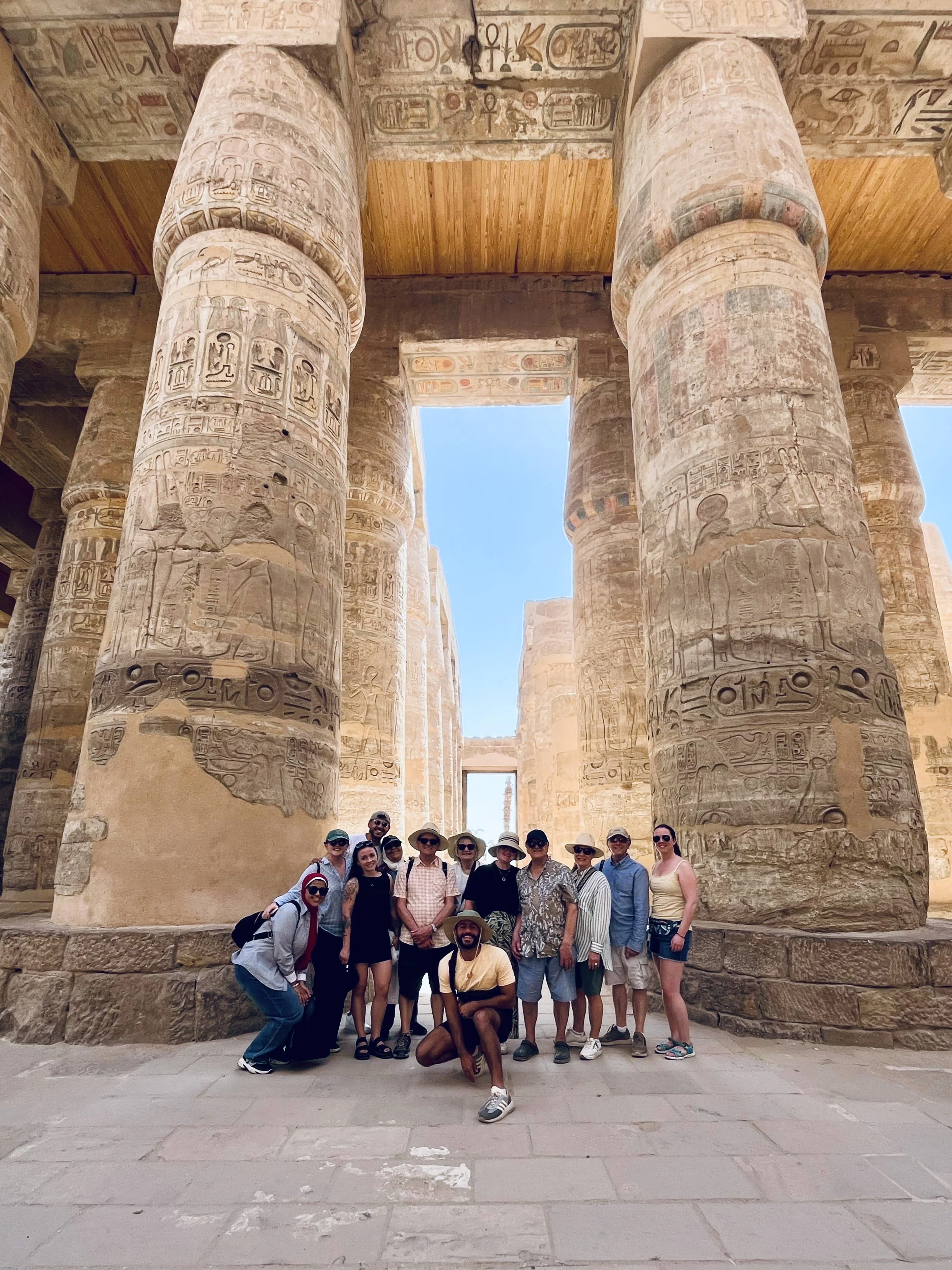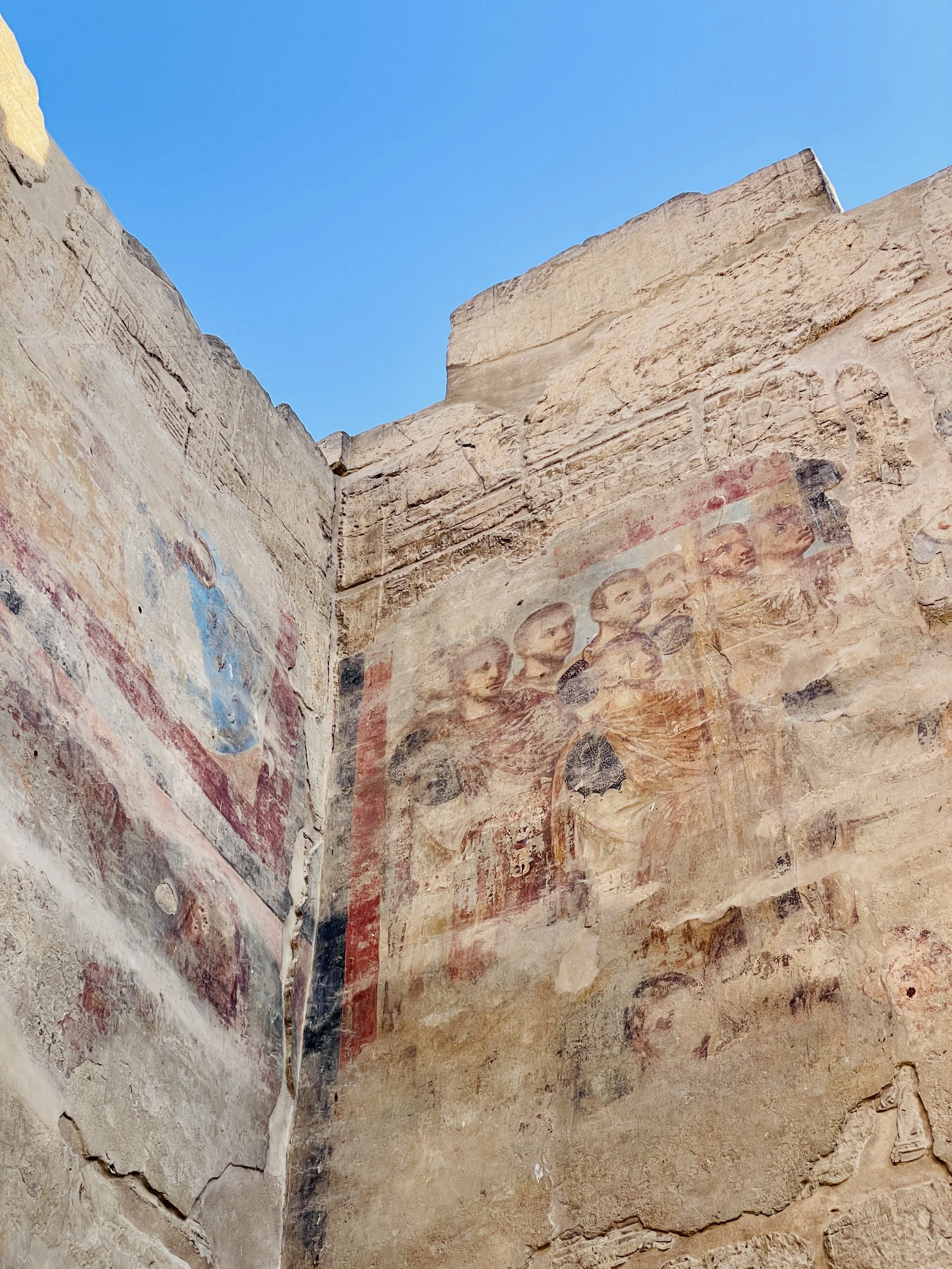Exploring Luxor: The World's Greatest Open-Air Museum
Exploring Luxor: The World's Greatest Open-Air Museum
words: Sophie Alexander-Osman
photography: Sophie Alexander-Osman
published: May 29, 2025

Nestled on the banks of the mighty Nile River, Luxor is often described as the world’s greatest open-air museum — and it’s easy to see why. This ancient city is a treasure trove of history, where every corner reveals stories carved in stone and echoes of a civilisation that shaped the course of human history. From the towering columns of Karnak Temple to the mysterious tombs hidden deep within the Valley of the Kings, Luxor offers an unforgettable journey through time.
Walking through Luxor feels like stepping back thousands of years, where the grandeur of the pharaohs still lingers in the desert air. Whether you’re wandering the vast temple complexes, drifting along the Nile on a felucca, or exploring bustling local markets, Luxor’s mix of ancient wonders and vibrant present-day life creates an experience unlike any other. This is a destination where history isn’t just preserved — it’s alive.
We visited Luxor and Aswan in April 2025, and it ranks among the best trips we’ve ever done. We planned the journey for 12 of us — a mix of family and friends from both Egypt and the UK — and both regions exceeded our expectations in every way. In this post, I’ll cover the highlights of what to explore in Luxor, the temples you can’t miss, where to eat, and my recommendation on where to stay.
The only downside was that our hot air balloon ride, which we’d really been looking forward to, was cancelled twice due to high winds. It just means we’ll have to go back — not that we’re complaining.
Getting Around
We booked our tour with Tegwal, an Egyptian-based travel company that took care of absolutely everything — and I mean everything. From hotel bookings and restaurant reservations to train tickets, museum entries, and transportation, they handled every detail with precision and ease. It made exploring a destination as layered as Luxor feel completely effortless.
Our transport was organised in comfortable, air-conditioned buses, which was a real luxury in the midday heat. Tegwal even arranged for a dedicated English-speaking guide, Zidane (pictured right), who quickly became the heart of the trip. Incredibly knowledgeable and full of character, he was like a walking encyclopaedia — able to bring ancient history to life with stories, context, and humour. Having someone local and deeply informed made all the difference when navigating Luxor’s complex archaeological sites and timelines.
WHAT TO SEE
Valley of the Kings
The Valley of the Kings is the ancient burial site of Egypt’s New Kingdom pharaohs. It contains over 60 tombs carved into the limestone cliffs, including those of Tutankhamun and Ramses VI. Visitors can enter several tombs, where colourful hieroglyphics and detailed murals depict the afterlife journey of the pharaohs. Some of the most famous tombs require separate tickets, so it’s worth planning ahead.
Temple of Hatshepsut
This mortuary temple was built for Queen Hatshepsut, one of Egypt’s few female pharaohs. It is notable for its unique three-tiered terraces that rise elegantly against the cliffs of Deir el-Bahari. The temple features impressive reliefs that tell the story of Hatshepsut’s reign and divine birth, making it a highlight for visitors interested in both architecture and history.
Medinet Hebu
Medinet Habu is the mortuary temple of Ramses III, located on Luxor’s West Bank. It is known for its well-preserved walls covered in detailed reliefs depicting the pharaoh’s military campaigns and religious ceremonies. The temple complex is quieter than Karnak or Luxor Temple, offering a more peaceful exploration of ancient Egyptian art and history.
Dendera Temple
Located north of Luxor, Dendera Temple is dedicated to Hathor, the goddess of music, love, and joy. The temple is famous for its well-preserved ceiling carvings and a large hypostyle hall supported by intricately decorated columns. Unlike many sites, Dendera’s roof and upper walls remain intact, providing a rare glimpse of original Egyptian temple decoration.
Karnak Temple
Karnak Temple (my highlight of the trip!) is one of the largest religious complexes in the world and the most visited site in Luxor. It comprises temples, chapels, pylons, and obelisks built over centuries. The Great Hypostyle Hall, with its 134 towering columns, is the highlight. Karnak was dedicated primarily to the god Amun and served as a centre of worship and royal power.
Luxor Temple
Luxor Temple stands on the east bank of the Nile and was built mostly by Amenhotep III and Ramses II. It features impressive colonnades, statues, and obelisks. Unlike many temples, Luxor Temple was used continuously until modern times and is still a place of worship. It is especially atmospheric at night when illuminated by soft lighting.
WHERE TO STAY
Pyramisa Hotel Luxor
We stayed at the Pyramisa Hotel Luxor for three nights, and it had everything we needed for a comfortable base in the city. The hotel is well located on the east bank, with lovely views over the Nile from both the rooms and the outdoor terrace. Our room was spacious and clean, and the hotel offered all the key amenities including a pool, bar, and on-site restaurant. We chose to dine at the hotel each evening — the food was consistently good, with plenty of choice — and breakfast each morning was excellent, with a generous buffet of local and international options. It was a convenient and relaxing place to come back to after long days exploring.
WHERE TO EAT
Sofitel Winter Palace
On the first night, we had dinner at the Winter Palace, one of Luxor’s most historic hotels, originally built in 1886. The terrace overlooks the Nile and offers a quiet, intimate spot with uninterrupted views of the river. The hotel has hosted archaeologists, royalty, and dignitaries over the years, including those involved in the discovery of Tutankhamun’s tomb. Service was professional, and the menu featured international dishes with some local options. It’s more expensive than other places in the city, but the setting and historical significance make it worth the stop.
Al Karanah Al Gadida City Local Farm
We had lunch at a local farm in Al Karanah Al Gadida, just next to the alabaster stone shops — a surprise arranged by our guide and one of the most memorable parts of the trip. Set in the owner’s fields, the setting was a complete contrast to the usual image of Egypt: green, quiet, and open. We sat in a shaded room with traditional red cushioned seating, arranged around the edges in a majlis-style layout. It was a welcome break from the afternoon heat. The food was home-cooked Egyptian cuisine — soup to start, followed by rice, meat dishes, and several vegetarian options. Everything was full of flavour, and we had the entire space to ourselves. It felt like a hidden gem, and one we wouldn’t have found without the guide’s recommendation.
RELATED POSTS
























